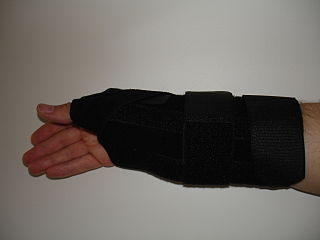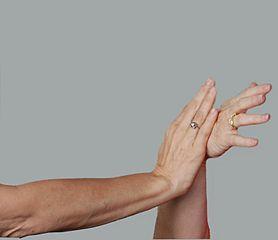Texting Thumb (Repetitive Strain Injury) Causes and Prevention
What is texting thumb?
Texting thumb as it is commonly known is a type of injury that is also seen with prolonged use of computers, mobile phones, video game controllers and handheld gaming consoles. It is a medical condition that is on the rise throughout globe. Texting thumb is one type of computer-related injury of the hand and can affect any finger or even involve the wrist.
However, most of us know it as the thumb pain and often stiffness that arises with hours of texting on a mobile phone or with playing a video game. What needs to be stressed is that it is not so much the device that is at fault as it is the behavior of the user. Texting thumb does not always need medical treatment. Simple lifestyle changes and conservative measures may be sufficient to ease the pain and stiffness.
Causes of Texting Thumb
Repetitive strain injuries (RSIs)are a broad group of disorders that arise with overuse of some part of the body, mainly with the upper part of the body. It did not arise with the computer age but these days repetitive strain injury (RSI) of the thumb is often seen with overuse of electronic devices.
A repetitive strain injury is a result of inflammation and even damage of the muscles, tendons, ligaments and/or nerves of the part of the body that is repeatedly used – over hours, days and weeks. An RSI can also occur over a short period of time with a forceful or awkward movement.
With texting thumb, the fine repetitive movements causes tiny tears in the muscles and tendons. As a result the muscles contract and this decreases the range of motion. Furthermore the tendons run out of lubrication as there is insufficient time to rest and recover.
The inflammation of the muscles and tendons can also press on the surrounding nerves due to the swelling. This is similar to what happens in carpal tunnel syndrome but here the problem lies in the wrist. Collectively a person experiences pain, stiffness and sometimes twitching, numbness and hypersensitivity to touch.
Repetitive stress injury of the thumb is also known as De Quervain syndrome or De Quervain’s tenosynovitis. The treatment requires the use of medication like NSAIDs as well as physical and occupational therapy. Surgery is rarely done but may be an option when other measures fail and the symptoms are severe.
Prevention of Texting Thumb
The damage in texting thumb is usually not permanent. With time the inflammation will usually subside. Symptoms like pain resolve and eventually normal flexibility will return. Ideally texting thumb should be avoided by reducing overuse of the thumb. It may at times be accompanied by arm pain and wrist pain.
Limit Texting Time
It is obvious that you should stop the action that is causing the strain. Texting has become part of the living in a digital connected world. However, there is a limit to just how much you should be texting. Much also depends on the type of device you use. Texting constantly for hours over several days and weeks will take its toll even on the most able bodied person with the most ergonomically designed device. It is not just about resting a few hours and starting again. Try to break the habit of long hours of texting.

Ice the Thumb
Icing the thumb can also be helpful. It is one step in the R.I.C.E. approach to soft tissue injuries (Rest, Ice, Compression and Elevation). Do not apply ice directly on the skin. Rather use a commercial or homemade ice pack. Icing should be done for 20 minutes at a time, several times a day. Heat can make an injury worse if it is applied immediately after an injury. So if you have had a long day texting and start feeling the pain and stiffness, opt for ice rather than heat.
Immobilize the Thumb
The thumb is one of the most commonly used fingers and you will inadvertently have to use it several times a day in the course of normal life. Apart from resting the thumb by not texting, it may be necessary to immobilize it. It will avoid further use and worsening of the injury. Many different types of wrist and hand braces are specially designed to immobilize the thumb as well. In severe cases an orthopedic splint like a spica splint may be necessary. Just a few days of using a brace or splint can be sufficient to assist with a recovery.

Change The Texting Finger
If you are experiencing problems with your thumb and texting is unavoidable then try to switch to another finger. Most of us are not as quick at texting with any finger other than the thumb. And most devices have keyboards or keypads that have been designed for ease of use with the thumb. Even if it is just one or two days, texting with an alternate finger can give your thumb the rest it needs to heal. It may feel awkward and can in fact strain the other fingers that are not accustomed to these repetitive actions. But it should not a major problem for a few days at most.
Do Regular Finger Exercises
As with any part of the body, ensuring that your fingers and thumbs are conditioned for its activity helps in preventing injuries. Most of us do not do stretching exercises for our hands yet it is the most used appendage. Here is a helpful guide on thumb exercises from the Northwestern Memorial Hospital. While stretching exercises may help to minimize some of the the injury, it cannot replace changes in behavior like reducing texting. An occupational therapist and physical therapist can both assist in showing you better ways to perform the same activity without causing strain.

Text and Type Slowly
If all else fails and you have to text, try to control the speed at which you do it. Injuries are worsened by repetitive actions that are done very fast. Getting a message across may sometimes be a matter of urgency but at other times fast texting is more a matter of habit than need. Pace yourself. Try to use other fingers that will relieve the strain on the thumb and also teach you to slow down a bit. You may find that slower texting will also ‘quieten’ down the conversation among participants meaning that you have to type less.
References
- De Quervain’s tenosynovitis. Mayo Clinic
- Repetitive strain injury. University of Michigan
Last updated on September 26, 2018.




